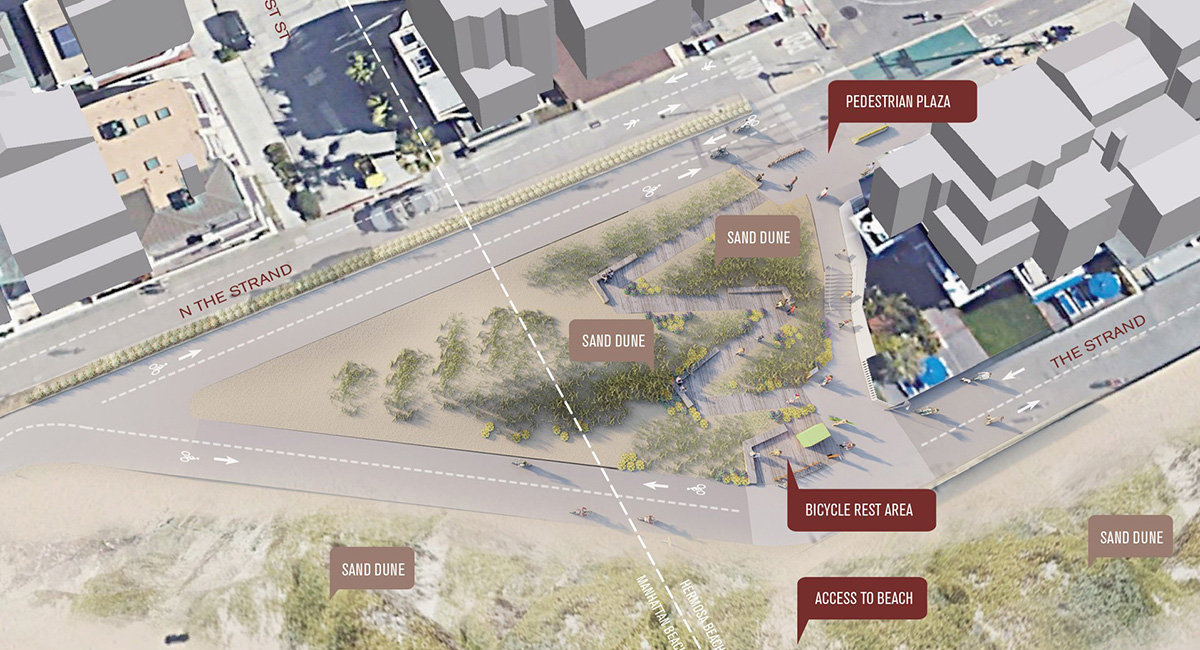





Hermosa Beach Climate Change Adaptation and Resiliency Measures
Hermosa Beach is the quintessential Southern California beach: almost 2 miles of ocean frontage with 94 acres of public beach, awesome surfing, swimming, sun bathing and of course sand volleyball. It’s one of the most popular beaches in LA County. The City’s residents love their ocean views and its economy relies on its ocean visitors.
The new Climate Change Adaptation and Resiliency Measures (CCARM)—developed by our team of landscape architects, coastal engineers, biologists, economists and the community—will help ensure the community can continue to enjoy the area’s natural coastal beauty for generations.
Hermosa, like many coastal areas, faces increasing risks from climate change and sea level rise (SLR). Without adaptations, the area will see significant beach narrowing, inundation and storm flood hazards, as well as stormdrain failures and groundwater hazards that threaten public infrastructure, commercial development and residences.
The plan’s hydrological and SLR studies (using three SLR scenarios) determined the level of vulnerability for three priority sites in the City. The community weighed in on the analysis, preliminary and the final conceptual designs at a series of public workshops.
To reduce pluvial flooding (when stormdrains buried under the beach are overwhelmed by a backflow from the ocean during high tides and storms), the primary strategy is to reduce the volume of stormwater entering the system by replacing impervious structures with permeable streets, sidewalks and trees, as well as bioretention planters, which can store water, and underground filtration systems.
The key to the beach’s long life life is a “living shoreline” concept. A new vegetated dune will anchor sand, to reduce beach narrowing and provide a buffer to protect inland areas from waves, flooding and erosion. It’s designed to be low enough not to block first-floor views of the ocean horizon and won’t hinder public access to the beach.
There’s good news: most of the groundwater hazards increase at 6.7-ft. SLR, which has a 1 in 200 chance of occurrence by 2100. So the City has time to prepare. Addressing and fixing flood capacity underneath the street is also a great opportunity to enhance what lies above the street.
